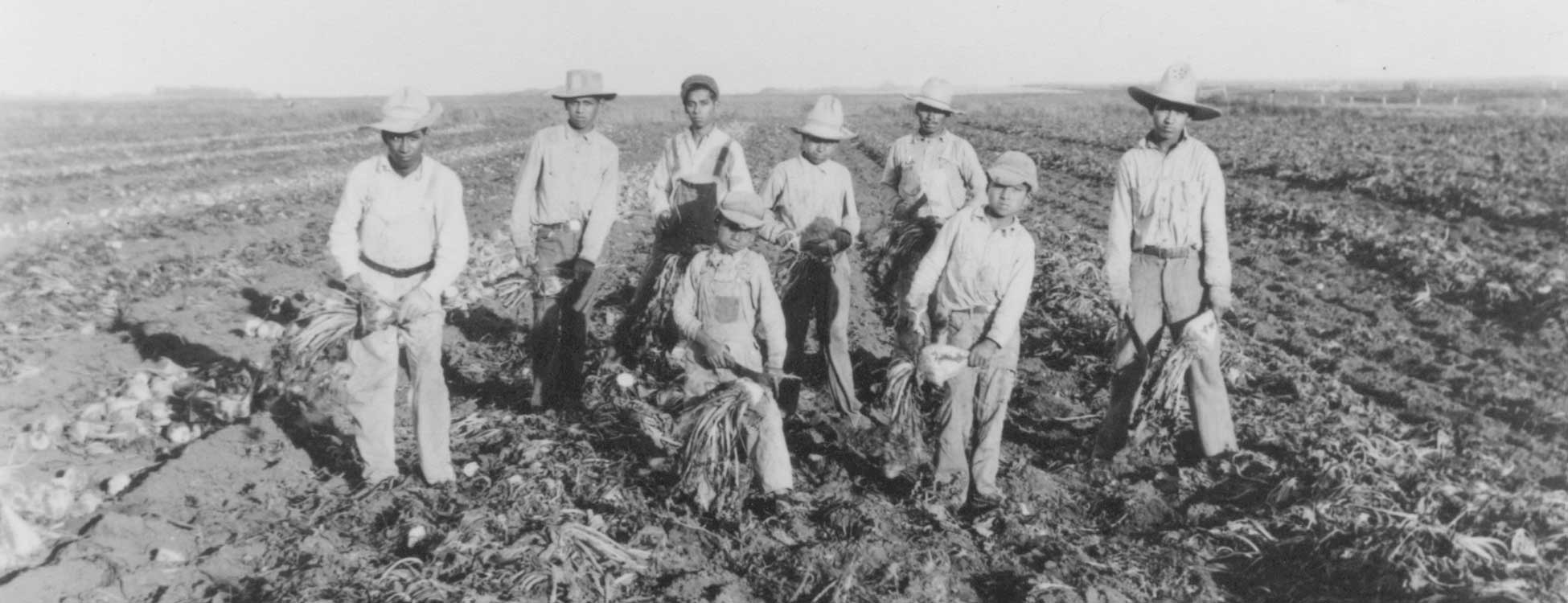Shortly after World War I and continuing for about 50 years, North Dakota became the summer home for thousands of Mexican-American families. Most of these Spanish-speaking people journeyed from Texas to work in the sugarbeet fields of the Red River Valley. A person who travels from one area to another to find work is called a migrant worker.

Figure 61. Migrant workers labor in a Red River Valley sugarbeet field, 1930s. (Terry Shoptaugh)
The sugarbeet industry in North Dakota became so successful in part because of the efforts of the Mexican-Americans who worked closely with the sugarbeet farmers. Many of the migrant families came back to the same farms year after year and became life-long friends with the farm families.
Working in the sugarbeet fields was hard work. It consisted of stooping over to hoe weeds using a hoe with a handle that was only 12 to 18 inches long. This “short hoe” allowed the worker to remove weeds close to the sugarbeet plants without damaging the sugarbeets. Since hoeing sugarbeets required skill rather than strength, children were able to do this type of fieldwork just as well as the adults. It was common for whole families to work together to keep the acres and acres of sugarbeet fields free from weeds. Families were usually paid a certain price per acre for their work.
As modern machinery became available, the need for fieldworkers on the sugarbeet farms declined. In 1930, six or seven workers had been needed for each acre of sugarbeets. Today, the migrant worker has disappeared from the sugarbeet fields of the Red River Valley. Many of the Mexican-Americans who first came to the state as migrant workers have now made their permanent homes in North Dakota.


